Residential Rate Design and Death Spiral for Electric Utilities: Efficiency and Equity Considerations
Abstract
Nearly flat growth in US electricity demand, combined with policies to increase distributed generation, have resulted in concerns of revenue “death spiral” for electric utilities. Redesigning rate structures in response to high penetration of distributed generation creates both efficiency and equity considerations. This chapter explores these considerations in the context of New Jersey that has three policy elements: aggressive solar mandates, net-metering, and recovering almost all fixed costs for residential consumers through volumetric rate. Winners and losers are projected under possible scenarios of rate adjustments, along with effects on the collection of Sales and Use Tax on sale of electricity.
Keywords
1. Introduction
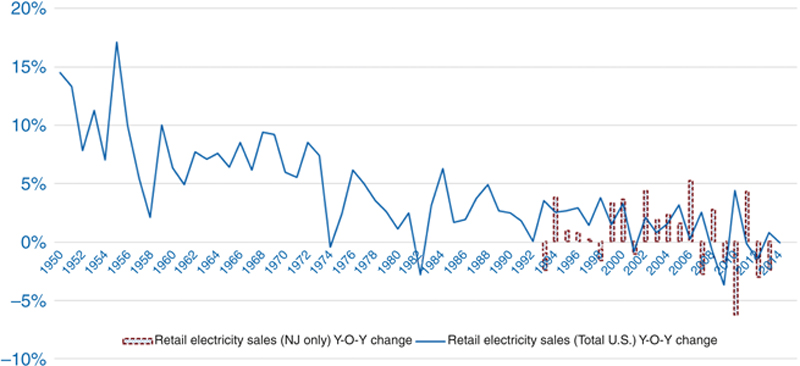

2. Cost recoveries via fixed and variable components
2.1. A Brief History of Electricity Tariffs
2.2. Rate Design: Fixed Versus Variable
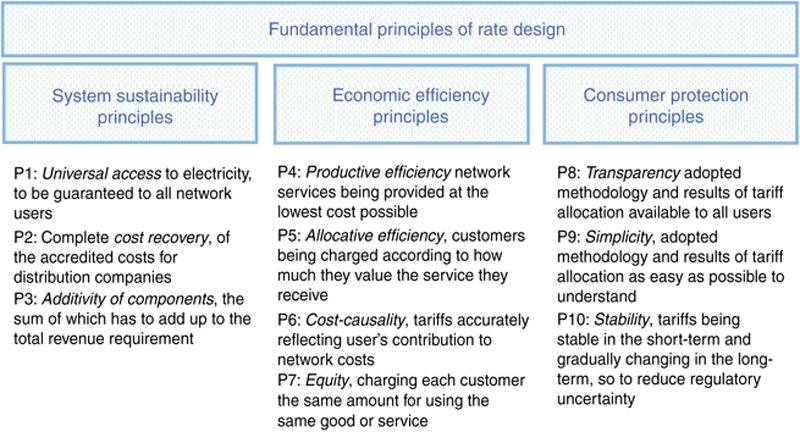
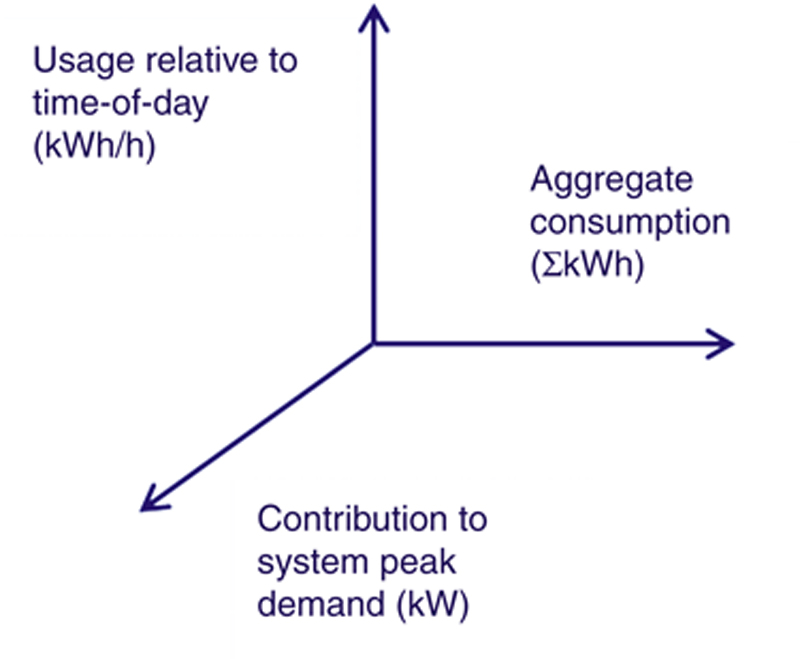
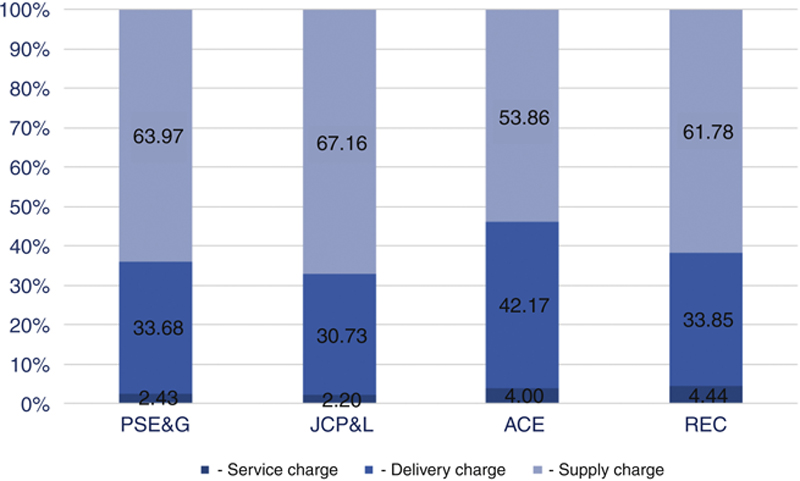
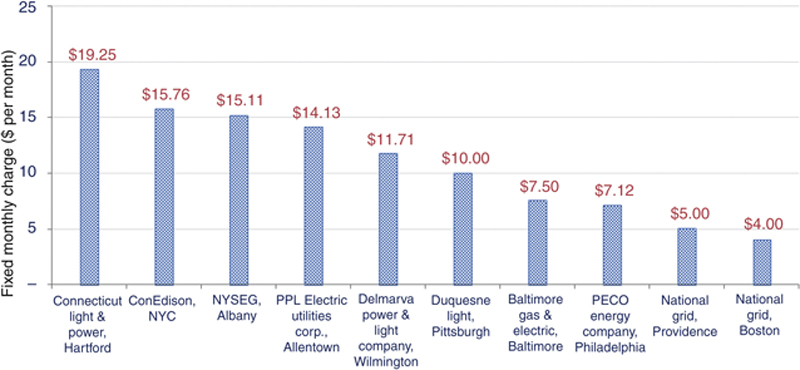
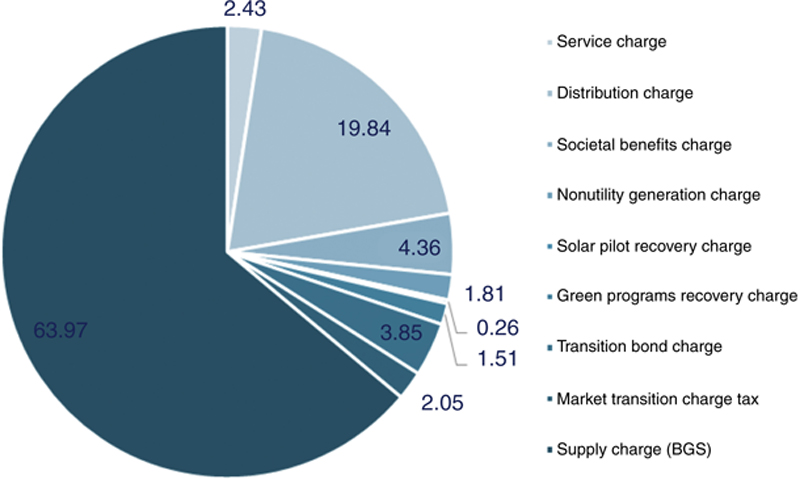
3. Winners and losers: a case of new jersey
3.1. Supporting Policies and Incentives for DER

3.2. Quantifying Change in Tariff for Residential Consumers
Table 10.1
New Jersey: Number of Households Eligible and Served Under Various Low-Income Assistance Programs
| For New Jersey | No. of HHs |
| HHs served under Universal Service Fund (2013)a | 212,898 |
| HHs served under Fresh Start (2013)a | 14,564 |
| HHs served under Lifeline (2013)a | 304,534 |
| HHs served under Comfort Partners (2013)a | 11,760 |
| Total number of LIHEAP eligible HHs (2011)b Federal Income Standards | 1,044,279 |
| Total number of HHs in New Jersey (2013)c | 3,578,141 |
a LIHEAP Clearing House, http://www.liheapch.acf.hhs.gov/dereg/states/njsnapshot.htm
b LIHEAP Home Energy Notebook, for Fiscal Year 2011, published Jun. 2014, https://www.acf.hhs.gov/sites/default/files/ocs/fy2011_hen_final.pdf
c US Census Bureau, http://quickfacts.census.gov/qfd/states/34000.html


3.3. Quantifying Tax Effects for New Jersey State Government
Table 10.2
Winners and Losers Under Possible Scenarios of Rate Adjustments
| Possible scenarios for rate adjustments | ||||||
| Effect on stakeholders | No full revenue recovery for the utility | Revenue recovery through increase in variable charge (all customers pay) | Revenue recovery through increase in fixed charge (only participants paya) | |||
| 2014 | 2028 | 2014 | 2028 | 2014 | 2028 | |
| Consumer | ||||||
| Bill for high usage consumer with solar and net-metering | No change | No change | + 0.70% | + 1.45% | + 60.80 $ per month | + 62.12 $ per month |
| Bill for high usage consumer | No change | No change | + 0.70% | + 1.46% | No change | No change |
| Bill for average usage consumer | No change | No change | + 0.69% | + 1.45% | No change | No change |
| Bill for low-income consumer | No change | No change | + 0.69% | + 1.44% | No change | No change |
| Government | ||||||
| Loss of SBC | $12.39 million per year | $25.94 million per year | Nil | Nil | Nil | Nil |
| Loss of SUT | $19.44 million per year | $40.70 million per year | $12.74 million per year | $26.67 million per year | $12.74 million per year | $26.67 million per year |
| Utility | ||||||
| Loss of revenue (network related; not generation) | $95.78 million per year | $200.55 million per year | Nil | Nil | Nil | Nil |

a Assuming 0.6% consumers as participants in 2014 (PSE&G has a consumer base of 2.2 million and 12,504 solar systems installed in its service area). Total number of consumers in NJ is estimated at 4 million, out of which 2.2 million served by PSE&G, 1.1 million served by JCP&L, 545,000 consumers of Atlantic City Electric, and 200,000 consumers of Rockland Electric. Participant share for 2028 is assumed to be 1.2%.
